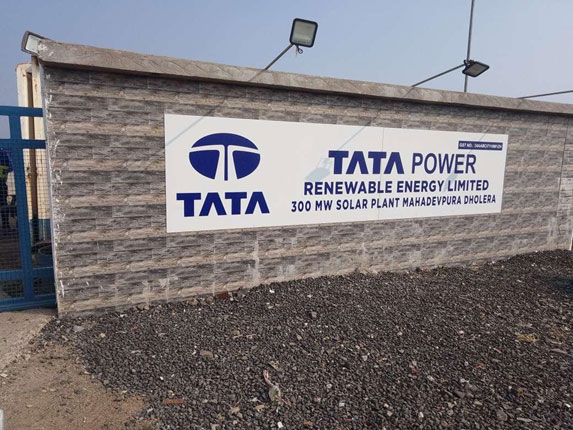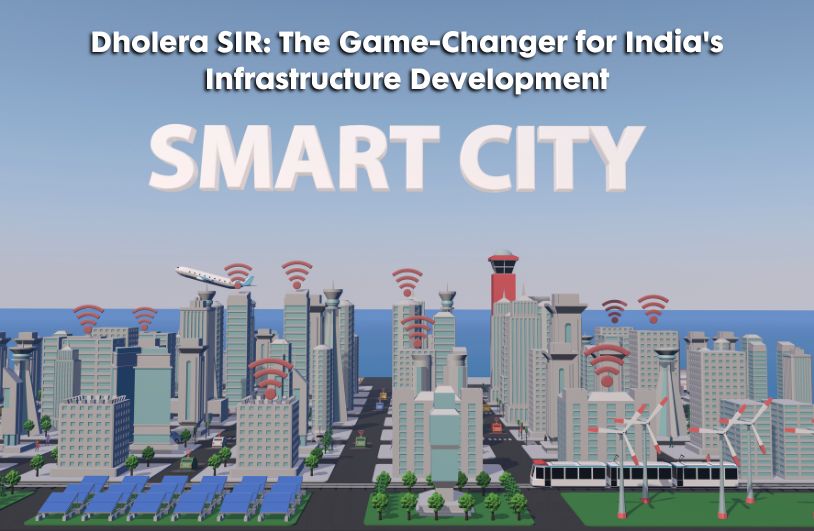07-Nov-2024

02-Sep-2024
Dholera Solar Park: Shaping the Future of Clean Energy in India
In the global race to adopt renewable energy, India has emerged as a formidable player, showcasing its commitment to sustainability through large-scale projects. Among these, the Dholera Solar Park in Gujarat stands out as a beacon of progress. Set to become one of the largest solar parks in the world, Dholera SIR is more than just a power project; it is a significant step toward shaping the future of clean energy in India. This blog explores the vision, impact, and future potential of the Dholera Solar Park, highlighting its crucial role in India’s journey toward a sustainable energy landscape.
The Vision behind Dholera Solar Park
The Dholera Solar Park is part of the broader Dholera Special Investment Region (DSIR), an ambitious project aimed at transforming the region into a global manufacturing and trade hub. Spanning over 11,000 hectares, the solar park is designed to have a total capacity of 5,000 MW, making it one of the largest solar installations in the world. The project aligns with India’s National Solar Mission, which set a target of achieving 100 GW of solar power by 2022—a goal that, while challenging, has driven significant progress in the renewable energy sector.
The choice of Dholera as the site for this massive project was strategic. The region's proximity to the Gulf of Khambhat ensures high solar irradiance, a critical factor for maximizing energy production. The arid climate and flat terrain further contribute to the suitability of the area for large-scale solar installations. By harnessing the abundant sunlight in this region, the Dholera Solar Park is poised to play a pivotal role in meeting India’s growing energy demands sustainably.
Technological Innovations and Advancements
The Dholera Solar Park is not only remarkable for its scale but also for the advanced technology and innovations it incorporates. The project is set to utilize state-of-the-art solar photovoltaic (PV) technology, including bifacial solar panels. These panels are capable of capturing sunlight from both sides, thereby increasing energy output—an especially effective feature in Dholera SIR, where the reflective sandy terrain enhances the albedo effect.
Moreover, the park is expected to integrate smart grid technology, which will optimize the distribution of electricity and facilitate its integration with other renewable energy sources. Smart grids are crucial for addressing the intermittency issues associated with solar power, ensuring a stable and efficient power supply. The exploration of energy storage solutions, such as battery systems, further underscores the project's forward-thinking approach, aiming to provide a continuous power supply even during periods of low sunlight.
Economic and Environmental Impact
The Dholera Solar Park is a catalyst for economic growth and environmental sustainability. Economically, the project is expected to attract significant investment, both from within India and internationally. This influx of capital will create numerous job opportunities, not only in the construction and operation of the solar park but also in related industries, such as the manufacturing of solar panels and inverters. The development of the solar park will stimulate the local economy and enhance India's position in the global renewable energy market.
Environmentally, the Dholera Solar Park represents a major step forward in India’s efforts to combat climate change. Once fully operational, the park is expected to reduce carbon dioxide emissions by millions of tons annually. This significant reduction in greenhouse gas emissions will contribute to India’s climate goals under the Paris Agreement. Additionally, the shift from fossil fuels to solar energy will lead to a reduction in air pollution, which is a major health concern in many parts of India. The Dholera Solar Park thus not only supports economic development but also promotes environmental sustainability on a large scale.
Challenges and the Path Forward
Despite its many advantages, the Dholera Solar Park faces several challenges. Land acquisition has been a significant hurdle, with delays caused by disputes over compensation and the need to ensure fair rehabilitation for displaced communities. Additionally, the large-scale deployment of solar panels requires a substantial amount of water for cleaning—a scarce resource in the arid region of Gujarat. Addressing these challenges requires careful planning and a commitment to balancing development with the needs of local communities.
Another challenge lies in integrating the solar power generated at Dholera into the national grid. The intermittency of solar energy, coupled with the current limitations of India’s grid infrastructure, poses a challenge to ensuring a stable and reliable power supply. However, ongoing advancements in energy storage technology and smart grid solutions are expected to mitigate these issues, paving the way for a more resilient energy system.
Looking ahead, the success of the Dholera Solar Park could set a precedent for similar projects across India. The lessons learned from Dholera will be invaluable in optimizing the design, implementation, and management of future solar parks. As India continues to pursue its renewable energy goals, the Dholera Solar Park will serve as a model of innovation and sustainability, inspiring other nations to follow suit.
Conclusion
The Dholera Solar Park is more than just a massive solar installation; it is a testament to India’s commitment to a sustainable future. By harnessing the power of the sun on an unprecedented scale, the Dholera Solar Park is shaping the future of clean energy in India. It represents a critical step toward reducing the country’s reliance on fossil fuels, mitigating climate change, and driving economic growth. As India continues to lead the way in renewable energy, the Dholera Solar Park will stand as a symbol of what can be achieved through vision, innovation, and determination.






